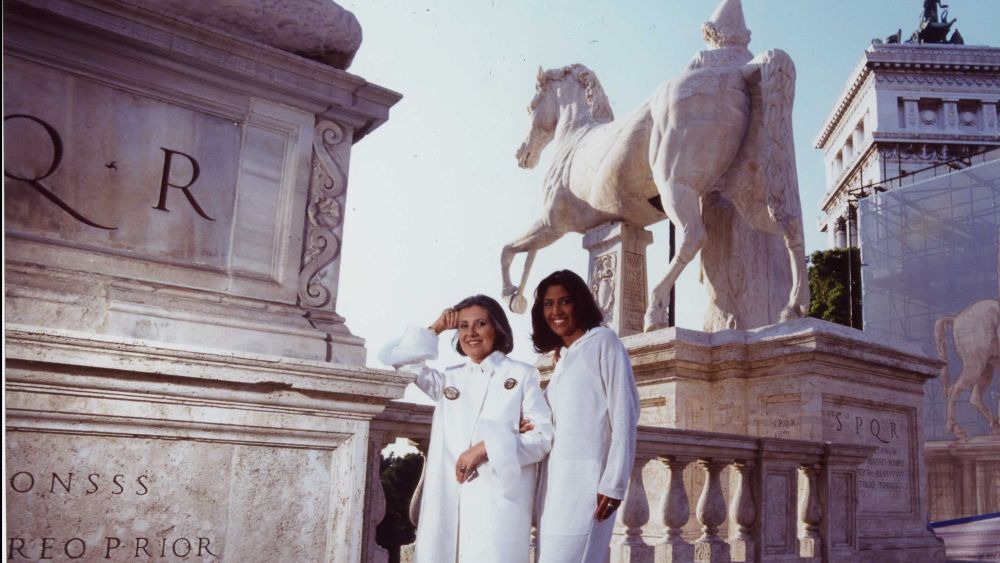Designers create clothes six months ahead but you’re buying last year’s trends
You walk into your favorite store in January, excited to shop the latest winter styles, only to find racks full of bright florals and lightweight fabrics. Meanwhile, those cozy sweaters you actually want to wear right now are nowhere to be found or marked down to clearance prices. This isn’t some cosmic joke — it’s the fashion industry secret about seasonal collections that keeps consumers perpetually confused and constantly chasing trends they can never quite catch.
Here’s what’s really happening behind those glossy fashion week photos and carefully curated store displays. The entire fashion calendar operates on a timeline that’s completely disconnected from when you actually want to wear the clothes, and it’s designed that way for reasons that benefit everyone except the people buying the clothes.
The six-month time warp
The fashion industry secret about seasonal collections starts with understanding that designers are working roughly six months ahead of when clothes hit stores. Right now, while you’re bundling up in winter coats, fashion designers are already deep into creating next summer’s collections. They’re choosing fabrics, finalizing silhouettes and planning marketing campaigns for clothes you won’t see until the weather gets warm.
This timeline exists because of the complex production chain that turns a designer’s sketch into something hanging on a store rack. Fabrics need to be sourced, often from different countries. Samples have to be made, tested and revised. Production runs require months of lead time, especially when manufacturing happens overseas. By the time a spring dress makes it from concept to store, six months have easily passed.
Why stores sell winter coats in July
Ever wonder why department stores start pushing fall fashion when it’s still blazing hot outside? It’s not because they think you want to layer sweaters in 90-degree weather. The fashion industry secret about seasonal collections reveals that retailers need to clear inventory to make room for the next season’s merchandise, regardless of what the weather outside actually looks like.
Stores operate on buying schedules that prioritize cash flow and inventory turnover over customer convenience. They’d rather sell you a wool coat in July at full price than wait until October when you actually need it but might expect a discount. This creates the bizarre situation where the clothes you want to buy right now are either unavailable or being sold as last season’s leftovers.
The psychological manipulation behind it all
There’s something sneaky about how this system keeps you constantly feeling behind the fashion curve. Just when you’ve figured out this season’s trends and saved up to buy a few key pieces, stores have moved on to completely different styles. You end up buying things you don’t immediately need just to feel current, or missing out on trends entirely because the timing never works out.
This perpetual cycle of being one step behind creates a sense of urgency that drives impulse purchases. When you see something you like, you feel pressure to buy it immediately because you know it’ll be gone soon, replaced by next season’s completely different aesthetic. The fashion industry secret about seasonal collections exploits our fear of missing out to keep us buying more than we actually need.
Fast fashion makes it even worse
While traditional fashion operates on this six-month cycle, fast fashion brands have shortened it to mere weeks, creating even more disconnection between what’s available and what’s actually useful. You might find summer styles hitting stores in February, followed by fall fashion in June, creating a year-round carousel of seasonally inappropriate merchandise.
Fast fashion’s rapid production cycles mean trends come and go so quickly that seasonal relevance becomes almost meaningless. You’re expected to constantly refresh your wardrobe regardless of weather, personal style or budget constraints. It’s like being on a fashion treadmill that never stops moving.
The environmental cost of seasonal madness
This disconnected seasonal system creates enormous waste because clothes go out of style long before they wear out. When stores need to clear inventory to make room for new collections, perfectly good clothing gets heavily discounted, donated or even destroyed. The fashion industry secret about seasonal collections contributes to a throwaway culture where clothes are treated as disposable rather than long-term investments.
Consumers end up with closets full of pieces they bought impulsively during end-of-season sales, many of which never get worn because they were purchased at the wrong time of year. Meanwhile, the clothes you actually want to wear right now are either overpriced because they’re current or unavailable because they’re not in season.
Shopping smarter in a backwards system
Once you understand the fashion industry secret about seasonal collections, you can work the system instead of letting it work you. End-of-season sales become opportunities to buy next year’s wardrobe at fraction of the cost. That winter coat marked down 70% in March will be perfect for next January, and you’ll pay less than half of what people will spend when cold weather returns.
Planning ahead also means you can focus on quality over trendiness. When you’re not pressured to buy something immediately because it’s about to disappear, you can take time to research materials, read reviews and choose pieces that will actually last multiple seasons.
Building a timeless wardrobe
The best defense against seasonal manipulation is investing in classic pieces that transcend the arbitrary fashion calendar. A well-made wool coat, quality jeans and versatile basics never really go out of style, regardless of what fashion weeks or store displays might suggest.
Focus on building a foundation of clothes that work for your actual lifestyle and climate, then add trendy pieces selectively when they genuinely appeal to you rather than because the fashion industry says it’s time for something new.
Bottom line
The fashion industry secret about seasonal collections reveals a system designed to keep you constantly buying rather than helping you dress well for your actual life. Once you understand the timeline manipulation and artificial urgency behind seasonal fashion, you can make more intentional choices about when and what to buy. Your wallet, your closet and probably your stress levels will thank you for stepping off the seasonal fashion treadmill.


